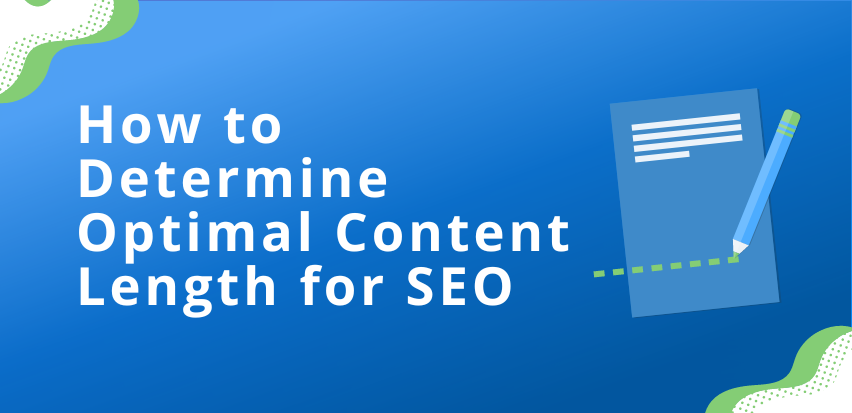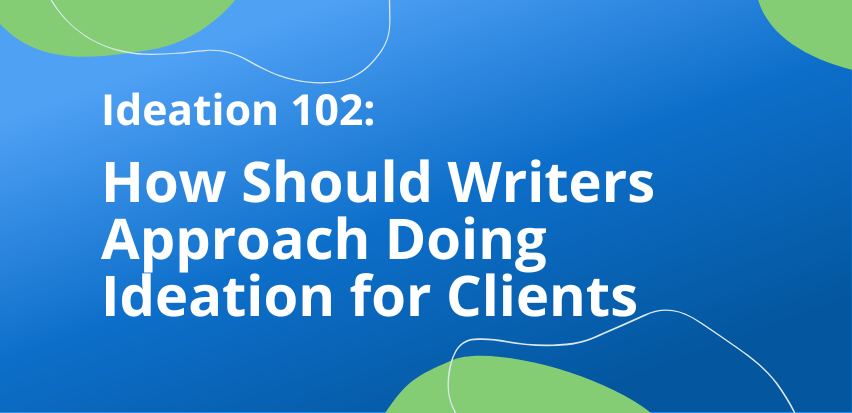Ever searched for a simple recipe online, only to find yourself trapped in a seemingly endless scroll past a blogger’s life story before hitting the actual ingredients list? You’re not alone. This phenomenon isn’t just a test of your patience — it’s a glimpse into the complex world of SEO, where the battle cry seems to be “the longer, the better.” But should you turn every post into a novel to satisfy Google? Spoiler alert: It’s not that straightforward.
Decoding the Length Myth: Quality Over Quantity
While long content peppered with detailed anecdotes and long-tail keywords can engage readers and please search engines, it’s the substance — not the length — that truly matters. Google values content that fully addresses user queries, acting as a comprehensive resource. Yet, length for the sake of length — filling pages with fluff rather than valuable insights — won’t fool Google’s discerning algorithms. The goal is to create content that directly answers readers’ questions, while avoiding unnecessary tangents. As you aim for SEO success, focus on creating meaningful content that informs and satisfies, rather than on merely extending word counts.
A Quick Overview of Current Conventional Wisdom on Word Counts
Recent studies indicate that content length matters to Google. According to Yoast, cornerstone pages perform best with over 900 words, but even taxonomy pages should have at least 250 words to maximize rankability.
It’s not just about pure rankings, either. Content with 1,000+ words attracts backlinks from twice the number of referring domains as 400-word content, according to backlink data from Ahrefs. Neil Patel also found that pages with more than 1,500 words receive up to twice the number of Twitter shares.
These findings shape conventional SEO wisdom asserting that longer content is typically better, and most sites such as BuzzSumo, Medium, and CoSchedule, call for content between 1,500 and 2,400 words to optimize performance in Google.
Still, there’s some nuance to content length. Neil Patel points out that different content lengths perform better in various industries, and SEMRush reminds content creators that quality is more important than length. However, as a general guideline, research from Hook Agency pinpoints 1,760 to 2,400 words as optimal.
What’s Google’s Stance on Content Length for SEO?
Google doesn’t like to give too much away regarding how its algorithms work and what might give you a leg up against the competition. However, John Mueller, head of Search Relations at Google, has repeatedly stated that content length isn’t a ranking factor.
Instead, Google looks for authority and overall content quality. Longer content often meets those criteria because it offers more value to users by thoroughly covering the subject matter.
So, what factors do equate to quality in the eyes of Google? Your content should:
- Approach the topic in an original way
- Provide a complete resource to answer all questions surrounding the topic
- Offer a unique analysis of available information
- Avoid using clickbait to attract users
- Flow well and be free of glaring spelling or grammar issues
Google also recommends looking for ways to highlight your expertise during content planning and creation:
- Build overall website and business credibility
- Present information using evidence and appropriate sourcing to improve trust
- Highlight the skills and knowledge of your authors so readers know where the information is coming from
- Double-check everything for factual accuracy
Finally, everything about the content should be oriented toward real people rather than search engines. This means content should be reader-friendly and should answer the questions it promises to answer.
While SEO is important to a page’s success, you must ensure that people don’t leave your page to look for more or better information elsewhere.
Why These Benchmarks Aren’t the Be-All, End-All
Most SEO experts will tell you not to take their numbers as gospel. Yes, research is important, and you should always understand what trends affect content marketing and your industry in general. But you don’t write content in a vacuum made solely of word counts; you write content for actual users — the people whose needs, preferences, and feedback shape its success.
You also have to consider the topic, the time available to create the content, and your budget, as these can all impact content length.
Google won’t rank your content higher for using 1,000 words to say what others say in 100 words.
Ultimately, you don’t need to write every piece of content according to some benchmark. CoSchedule notes that content that comes in around 2,500 words tends to perform best in the search engines — but that doesn’t mean every page or piece has to be 2,500 words. For example:
- A product description for a white cotton T-shirt should not be that long.
- A blog about how to wash a white cotton T-shirt will be full of unnecessary fluff if you try to get it to 2,500 words.
- A buying guide that discusses all the varieties of white cotton T-shirts and how to find the right one for you could, however, reach 2,500 words without being full of superfluous content.
Padded Content Doesn’t Do You Any SEO Favors
But if 1,500, 2,000, or 2,500 words is the range for optimal SEO performance, why can’t you make your basic T-shirt description that long?
It’s true. Most writers can meet the word count quota on any type of content by including irrelevant information, repeating exact phrases and statements, and saying everything in the longest way possible.
We like to refer to this as “peanut butter writing,” illustrated in the following example: “I love peanut butter sandwiches because peanut butter sandwiches have a lot of peanut butter in the sandwich.”
That’s 18 words giving you five words of information and no additional value. Here’s why peanut butter writing should be avoided:
- People don’t appreciate it. Online searchers are busy and don’t want to parse through fluff to find the information they want.
- It reduces the authority of your brand. That means people are less likely to return to your site, share your content, or link to it.
- Users can only handle so much. Even if someone makes it through one PB writing article on your site, they probably won’t return. This means less traffic flowing to your site.
- Fluffy writing isn’t as strong. Concise writing converts better because it gets straight to the point and avoids confusion.
In short, too much fluff can negatively affect the time people spend on your pages and the bounce rate. Consequently, people will be less likely link to your content, . hindering your site’s growth potential.
ALSO – Copywriting for SEO
Choosing the Right Word Count
If you’re not sure how to choose the right word count, you’re not alone.
Here are some tips for identifying the correct word count for every project.
Consider the topic and outline
Start by sketching out a simple outline, assigning each component a word count, and adding it to get a total. For example:
- Blog post: How to Buy a Book for a Child in Your Life
- Introduction – 50 words
- Seven tips – 700 words (100 words each)
- Find out what reading level they are
- Discover some of their interests
- Choose nonfiction or fiction
- Choose whether you’ll buy online or in the store
- Talk to bookstore employees for recommendations
- Buy something from an author or series they already read
- Consider the parents or guardians when you buy picture books
- FAQ section with three questions – 300 words
- What are reading levels, and how do they work?
- How can you learn more about kids’ books on Goodreads?
- How much stock should you put in Amazon reviews?
- Conclusion and call to action – 75 words
- Total word count: 1,125
An outline helps you determine the right number of words, but it also keeps the writer on the appropriate path and away from padding.
Need help coming up with a topic? Ideation 101: How to Develop Strong Article Themes That Work
Complete competitive benchmarking for your industry
There are industry benchmarks for content length. It makes sense that a blog in the tech industry should look different from one in the medical or fashion fields, and these numbers can be a good starting point.
But consider conducting benchmark research to help you understand the type and length of content performing in your niche. Tools like MarketMuse and SEMRush Content Templates can help you see how your content measures up against the competition, build strong outlines, and develop winning SEO ideas.
These tools look at the content currently ranking in the top 10 results on Google for the term you’re targeting and tell you how long your content should be to outperform the ranking content. In most cases, creating longer content than your competitors should be a priority for you.
The tools also disclose what topics your competitors’ content covers and suggests what topics to include in your content — one aspect of effective content gap analysis. In most cases, the top 10 results don’t cover all topics, so if you do, your content should outperform the others.
Here’s an example of what a report for the term “peanut butter sandwiches” looks like:
You’ll see a list of semantically related words (topics) you want to explore in your article. Build these into your outline so you naturally discuss them.
You’ll also see it recommends a word count of 651 words or more.
In most cases, the recommended topics are semantically linked to your main topic, so covering them as subtopics should add value for your readers. This is a great way to increase your word count without adding fluff.
Also, there’s a lot of evidence indicating that Google ranks semantically complete content well, as it delivers a high topic relevance. It’s one of the best ways to meet the expertise and authority demands of Google’s E-E-A-T guidelines.
While the tools mentioned above can help you identify ideal keywords, you can also use solutions like LSIgraph to find these related topics.
Consider the type of content page you’re building
The type of page you’re creating tends to dictate length, so that’s another benchmark to consider. Again, you should conduct your own research and testing. Listed below are the ideal lengths for each type of content:
- Blog posts: 1,000 to 1,500 words. Ensure the outline and topic are appropriate for the word count.
- Pillar pages: 3,000+ words. Hook Agency’s research shows continuing improvements in traffic and social shares up to 7,000+ words, but you won’t see this success from topics where there simply isn’t much to discuss.
- City (or local) pages: 300 to 800 words. Ensure each page targets local SEO accordingly and offers a unique take to avoid duplicate content.
- Landing pages: 400 to 1,000. Again, the word count depends on the topic you’re covering.
- Guides: 1,500 to 2,500 words. Google rewards guides that explain how to do things in detail. You should also look for opportunities to include experience and expertise in this type of content. Create how-to guides that fit your company’s practical skill set.
- Product descriptions: 50 to 300 words. Only the most complex or unique products, such as computers, need the higher end of the word count.
- Press releases: 400 to 700 words. Keep press releases short to ensure journalists can digest your message quickly and easily.
Remember, these benchmarks for SEO content length are simply guidelines. If you’re struggling to meet these word counts, it could mean you should drop the word count or reassess how you approach your topic.
Conversely, the opposite is also true. More words are better if they help paint a more comprehensive picture of the topic without boring readers.
Does User Intent Affect Optimal Content Length?
User intent — the information a user expects to find when searching for a specific keyword — affects optimal content length.
For example, someone searching the term “how to build a computer” will want a comprehensive resource that discusses the process at a high level while also explaining how to choose and install individual parts.
However, someone searching the term “buy running shoes” won’t typically want much information because they’re ready to purchase a product. You won’t necessarily benefit from a 2,000-word product page in this case.
Another aspect of search intent is specificity. Some search terms have a narrower scope, and your content needs to go in-depth on the topics. Longer content naturally targets more open-ended keywords, such as “nutritional benefits of apples,” whereas searchers will want quick answers for a term like “capital of Italy.”
Get the best of both worlds by offering concise featured snippet answers within your longer-form content, targeting narrower keywords.
TL;DR: There’s No Easy Answer
Choosing the right word count comes down to knowing what your audience wants and providing exceptional value. If you’re struggling with either of these, book a consultation call with our content strategy service. Our experienced strategists will utilize their industry knowledge to iron out the wrinkles in your SEO content.




